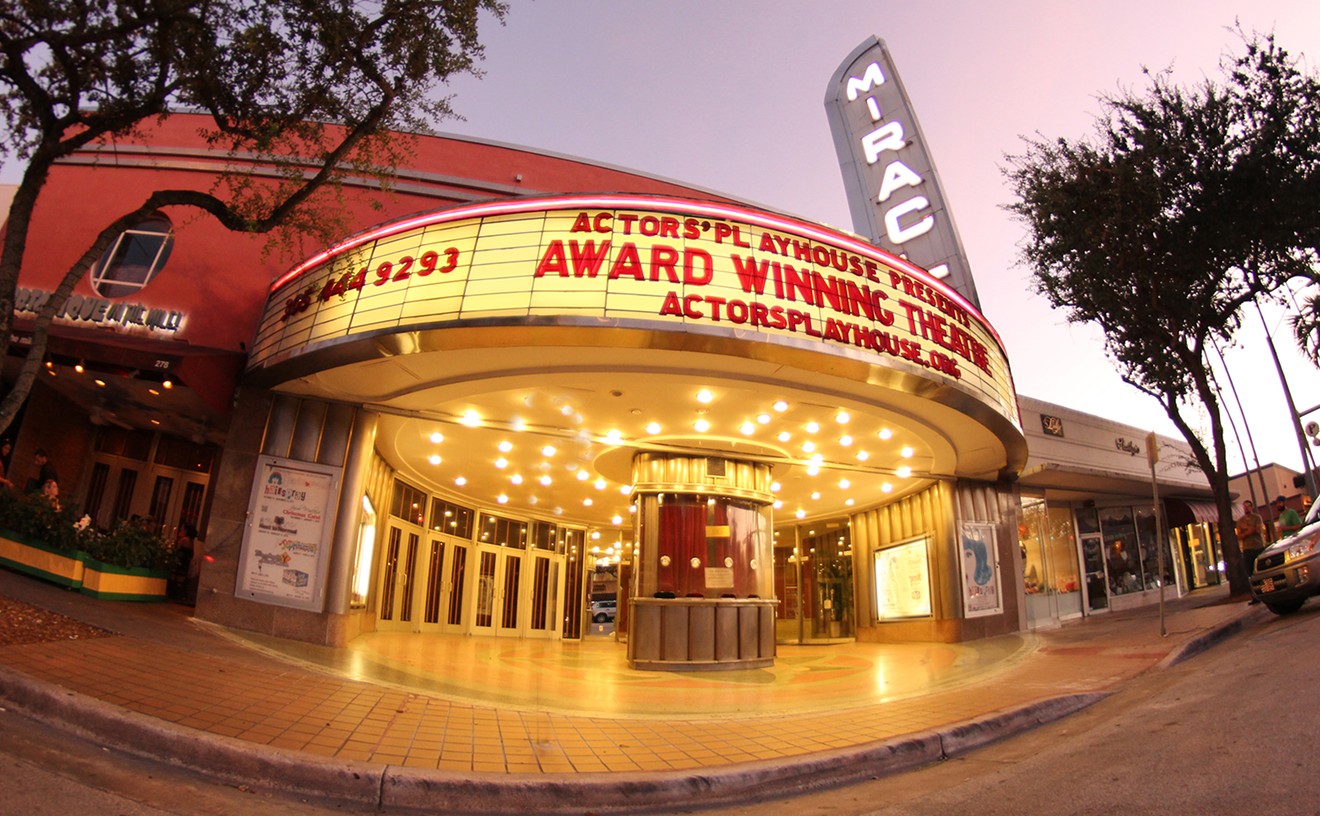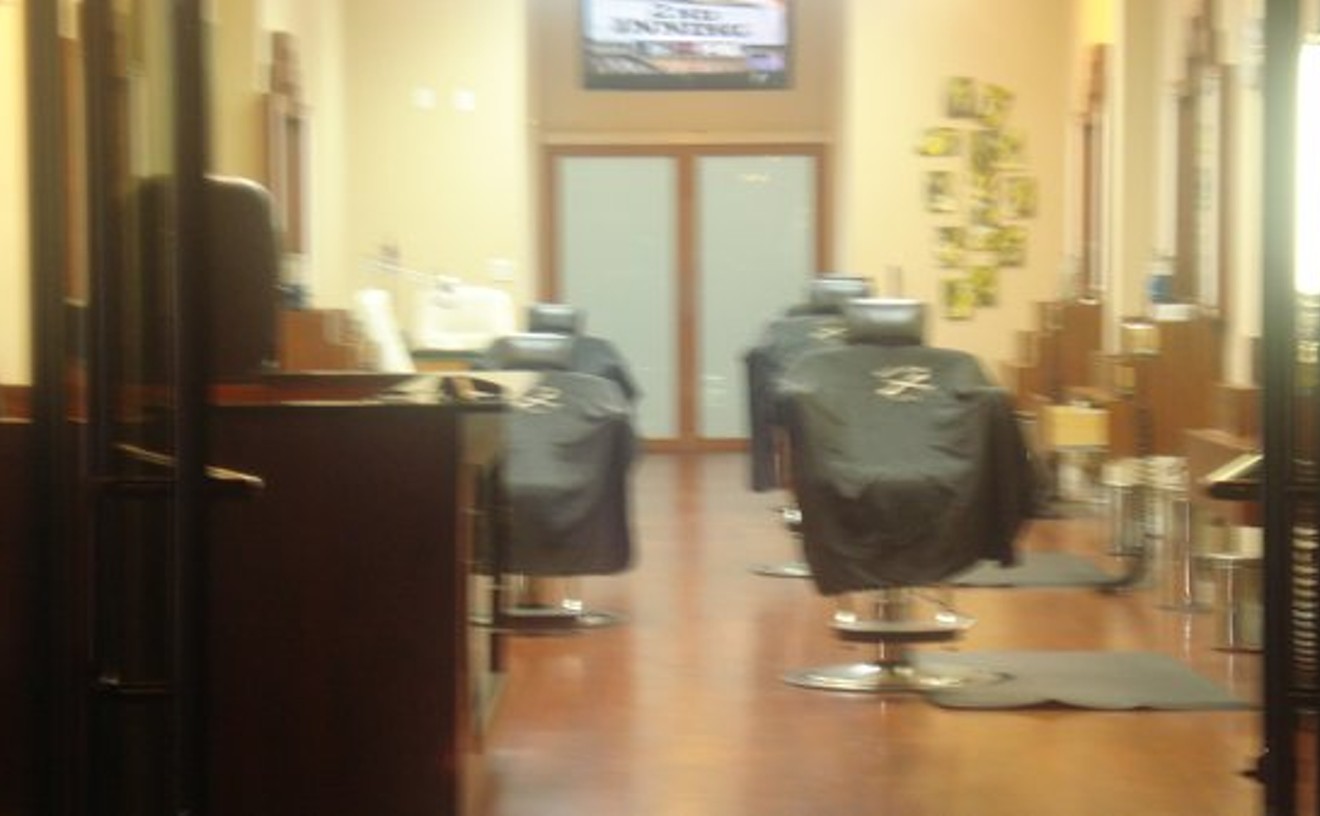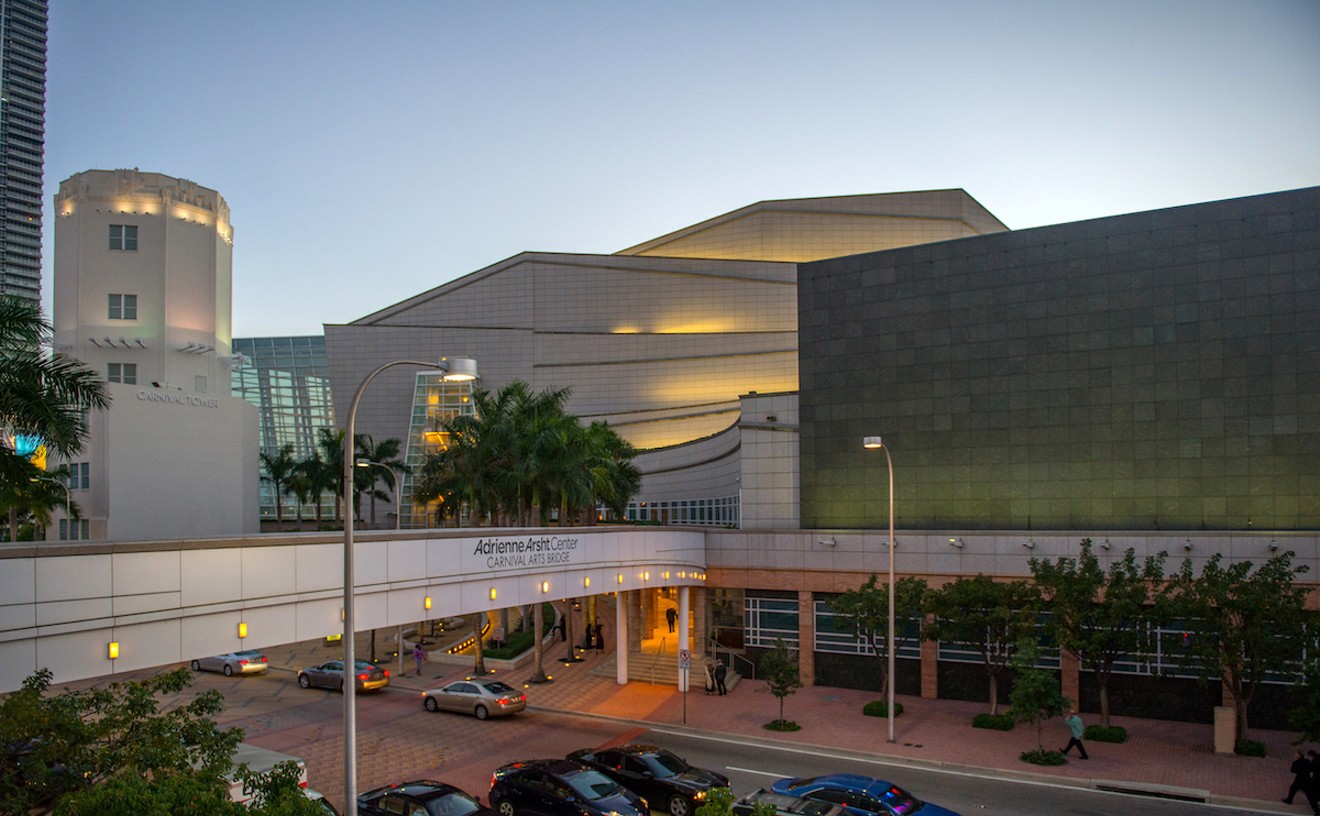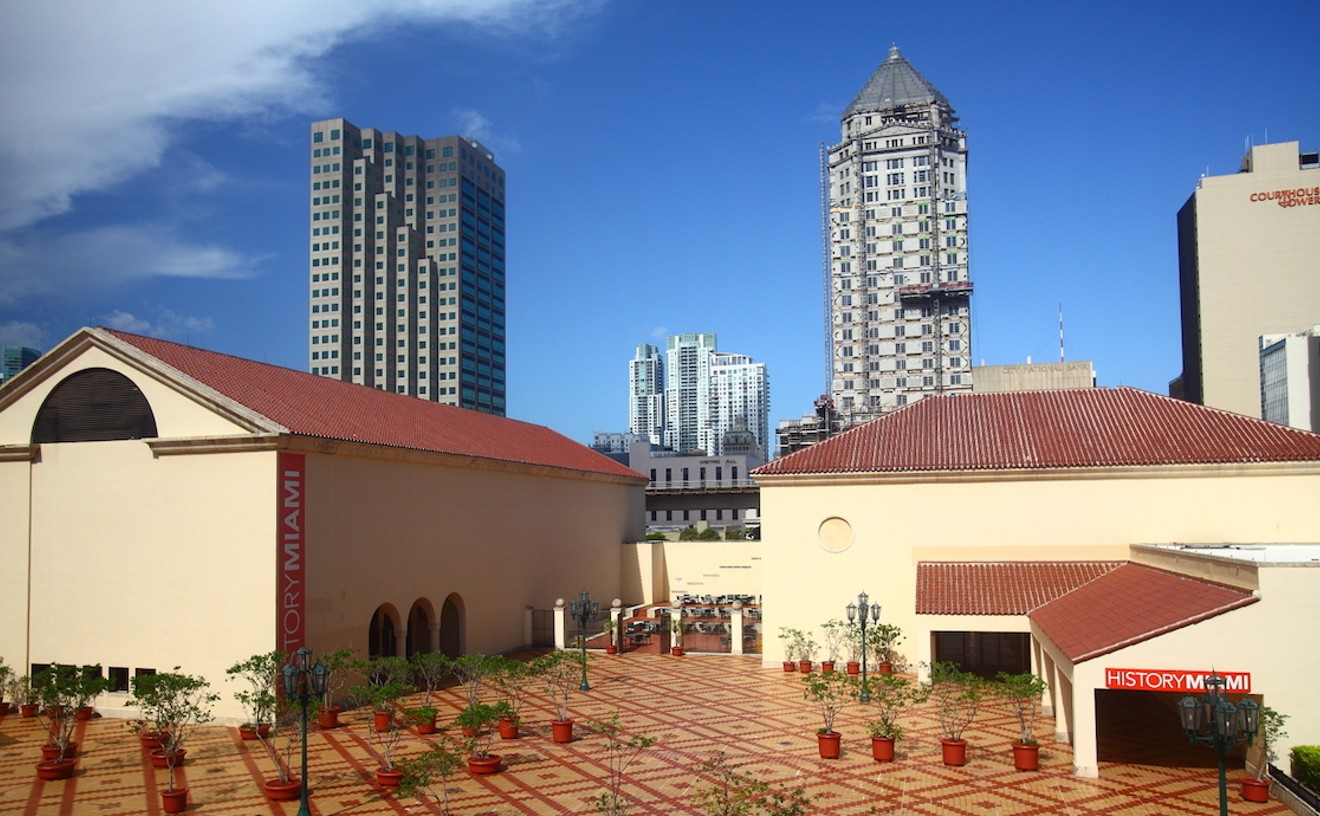It isn't easy being a history museum in a city that thrives on reinvention. Yes, we love our Art Deco district. The tourists do too. But there's a new historic site in town, and the Historical Museum of Southern Florida is working hard to give it the attention it deserves. This year, the HMSF secured the management of the Miami Circle, an archaeological site at the mouth of the Miami River. Two thousand years ago, it might have been a Tequesta chief's home, but now it will take millions of dollars to make the site the showpiece it deserves to be. In a town where high humidity, regular hurricanes, and new waves of developers continue to wipe away the city's past, the historians at HMSF know the story of Miami can't be told in one building. That is why they take to the streets and waterways with tours and cruises, reminding us that even if we just arrived here, we are now part of the tale of Miami.
Best Museum
Historical Museum of Southern Florida
Best Musical
Urinetown

Huge sets, great singing, fun and intricate dancing — Urinetown had all of that, and we salute it. Generally, though, we also like our shows full of ideas, novelty, craziness, and weirdness — again, all of which Urinetown had in excess. Urinetown is not a happy musical — Mark Holman and Glen Hotis's piece begins with a sad premise and ends with what might be the extinction of the human race — but it ekes more fun, surprise, and joy out of its gloom than most musicals without any gloom to plumb. This has something to do with the play's obsession with urine, maybe, but it's also the way it gives you the odd feeling you're seeing something you've never, ever seen before (unless you've seen it before). It is, after all, a musical political allegory about needing to take a piss, and there's not a lot of that in the world. What most folks want from their musicals is a night of pure, sugar-coated entertainment, which Urinetown was pleased to deliver while making everybody think a little too. Nobody else came close to doing both of those things this year; hardly anybody else even tried.
- 280 Miracle Mile, Coral Gables, 33134 Map
- 305-444-9293
- actorsplayhouse.org
Best Neighborhood Newspaper
Calle Ocho News
"Street Named for the King of the Guayabera!"
"Angelina and Brad Divorce!"
"Ants Don't Need Sleep!"
These are but a few of the frenetic and exciting headlines you'll find in Calle Ocho News, the only paper dedicated specially to covering the eponymous street in Little Havana. Founded in 2001, it has grown to a circulation of 40,000 and, in a testament to the cultural reach of that one little street, it can be found all over the city: in supermarkets, gas stations, and neighborhood cafeterias — Cuban or otherwise. Topics range from the minutiae of everyday life to themes of wider scope: A recent edition depicted two cowboys facing a sunset under the headline "The Old West Comes to Florida" — a reference to a recent wave of violent crime in the city. The paper has a website that, although minimal, is functional and offers up a web-only video section, where you can watch the popular "Shakira: Hips Don't Lie" or "Depravadores Sexuales" ("Sexual Depravities"). But best of all is the paper's Curiosidades (Curiosities) section, filled with the kind of random trivia you just can't get from the Miami Herald: Did you know blondes have more hair than brunettes?
Best Neighborhood Shrine
Shrine of Saint Philomena Catholic Church
On any given Sunday, this tiny Little Havana church — a shrine to the patron saint of faith and purity— fills with worshippers clad in suits or mantles and gloves while clutching their Bibles and rosaries. They enter the modest building down steps that oddly descend under sidewalk level. Inside, a sonorous Father Rueda delivers mass at 8 and 11 a.m. every Sunday. After service, many parishioners mingle in the parking lot in scenes reminiscent of an Elmer Gantry revival. A billboard on the shrine's front lawn urges help for pregnant teens.
Best Neon Sign with Missing Letters
International Inn
It's gone now, but for a few heady days in January, the International Inn adjacent to the 79th Street drawbridge on the Normandy Isle side was no longer the International Inn. It's gigantic green sign, one of the few spectacular neon signs left in Miami, hung over the glittering waters of Biscayne Bay advertising a magical place called "Intern Inn." How the "ational" letters of the sign knew to malfunction in unison to produce a mildly comedic chuckle that would have been downright hilarious in the spring of 1998 is a mystery that local psychics are still trying to parse out. But for those of us who were able to catch it, perhaps on the way home from a long day of trying to sell off a bloated inventory of condo units, while listening to Lakshmi Singh announce the latest death toll in Iraq, it took us back to a simpler time, when all we had to worry about was the commander-in-chief's taste in cigars, and should we throw another five percent into the 401K? Let's throw in another five percent, and while we're at it, get those Goo Goo Dolls tickets. Front row, baby.
Best New Building
The Sands Home
At first glance, this might seem like just another fine example of affordable housing. But Tangelia Sands's new place is the first one in Miami-Dade that is certifiably green, as in Leadership in Energy and Environmental Design (LEED)-certified green. That means builders used renewable materials and designed the home in such a way that the place is considered environmentally friendly to a set standard. Although some upscale buildings have incorporated these elements, this is among the first of its kind built with public money. Remarkably, making the three-bedroom, two-bath home near Liberty Square energy efficient required only an additional $12,850 in construction costs, but Sands and her four kids get to expect an energy savings of $2,500 per year ... while the rest of us get a cleaner environment.
- 1466 NW 61st St., Miami, 33142 Map
Best New Drama
Twenty Six (Marco Ramirez)
The best new drama to hit Miami this year was written in a single night and was less than 10 minutes long. Twenty Six had its first and probably last performance at The 24 Hour Theatre Project, a fundraiser masterminded by the cats at Naked Stage and gamely sponsored by the great Joe Adler, in which assorted playwrights came up with scripts with randomly assigned titles before dawn November 29, which were turned into plays and performed that same night. Most of the submitted pieces went for the funny bone rather than the heart strings, but Twenty Six wasn't one of them. SoFla's daring, darling young playwright Marco Ramirez somehow believed a 10-minute run time was sufficient to sell an audience on a highly improbable premise, get them to fall in love with his characters, and make them all cry. He was right. The show was about a man who had grown to the height of 30 stories overnight. When he woke, he freaked, and while trying to get his bearings, killed quite a few people, including a baby. His sister has been convinced by the military to persuade her brother to take a poison tablet in order to end the threat posed by his unfortunate size. It's not a conversation anybody expects to hear passed between a brother and sister, and few playwrights could have summoned the delicacy needed to pull it off. We're blessed to have one in our back yard.
Best New Trend
Designs razored into haircuts

This year, the fellas grew tired of simple side and center parts in their hair and decided instead to use their scalps for a canvas. Both professional and kitchen-table barbers were bombarded with requests for intricate designs etched into the sides and backs of heads across the city. To say that the tressy trend turned into a form of self-expression would be an understatement. We've seen guys with UM logos in the Gables, delicate star patterns on SoBe, and "Amor" in Hialeah, but we're still looking out for "The Heat Sux" downtown. Jason Amado of the Next Level runs down a few of the styles that have walked out of the shop's doors. "We've done laugh now/cry later, a panther, a dragon, Mohawk with designs on the side, and a lot of tribal designs," he says. "I don't see the trend going away. I think it's something that's always gonna be around because the young kids feel like they gotta get it since we [the older generation] got it back in the day." Some moms have even taken razors to their children's heads and crafted cringe-worthy designs akin to serving a Big Mac at Prime 112. We love them for the penny-pinching effort, but we won't tell them the "cut" looked more like strategically placed bald spots.
- 238 NE First Ave., Miami, 33132 Map
- 305-374-3651
Best Not So Cheap Thrill
A Phantom from Exotic Toys Car Rental
DJ Jazzy Jeff and the Fresh Prince dusted off their dookie chains and came out of retirement just for this occasion. We transcribed.
Fresh Prince: A-yo, Jazzy. Can you please tell me why you never see a rapper driving a Cam-ry? I've seen Lambos and Maseratis, even a Ferrari and a Bugatti — but not a Mazda or a Honda on MTV.
Jazzy Jeff: A-yo, why you worried about what the next man is doing? Go get your own. You got money — who you foolin'?
F.P.: Man, I don't have no cash — shiiit, I'm practically down to my last. I'd be a fool to cop a car if I can't buy the gas.
J.J.: Yeah that wouldn't be a good plan, and you can't ask your pops — your parents just won't understand.
F.P.: But what's this I see? A quick-fix solution. We in business, Jazzy! For 4,500 bones, I can just rent a car that costs more than my home. The Rolls Royce Phantom, top-of-the-line, and for the next 24, this bad boy is all mine!
J.J.: Yeah, that's it, but check this out, Prince. Since you got your credit card out, you might as well go all the way — throw in another 500 beans and have a driver all day.
F.P.: Word, I'm gonna do that. You wanna ride?
J.J.: Man, you already know who's on the passenger side.
Best Opera
David Carlson's Anna Karenina

It's crazy but true: Until 2007, nobody had thought to turn Tolstoy's book into an opera. Maybe that's because not a lot of Russians have composed operas, or maybe it's that setting so much familial intrigue to music is too daunting for composers of any nationality. Whatever the reason, it's nice that we were forced to wait for composer David Carlson. His music is dense, dark, and mysterious — just like the lives it is meant to illuminate in Anna — and given to occasional moments of glittering transparency that leap up out of nowhere and disappear back to the same place. A strong (if starless) cast of people who could act as well as they could sing — soprano Kelly Kaduce, with a lonely timbre and a diaphragm like a bazooka; sweet-voiced Sarah Coburn; the sensual Christian van Horn — gave Colin Graham's libretto all the dramatic punch it needed, and then some. In a year filled with good or great productions of canonical lollipops such as Manon Lescaut and Samson et Delila, Anna felt right at home.
- 1300 Biscayne Blvd., Miami, 33132 Map
- 305-949-6722
- arshtcenter.org






